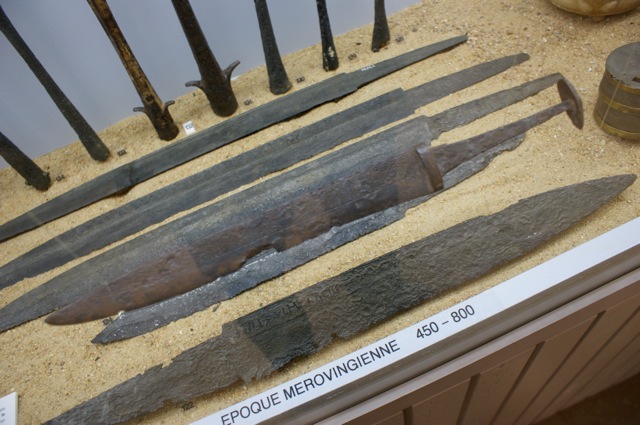Posts: 1,757 Location: Storvreta, Sweden
Fri 25 Dec, 2009 6:00 am
Hi Kirk,
This is good job you are doing. A handy reference.
Wheeler shows some of the basic shapes, but I have an impression it is from an anglo saxon perspective.
It leaves much unsaid about the continental sax. The sax has a diversified development in different parts of europe. I am not sure where to draw the line between war knife and sax. There are gaps and also less than certain lines from one type to the next.
Jeroen has posted a very handy illustration of the continental sax several times and I post it here again for ease of access. It is from a work by Georg Schmitt on the weapons of the Alemanni.
You can see the major types laid out in chronology.
-Narrow long sax from about 450 to 520/30
-Short sax from 520 to 570/80
-Narrow sax from 570 to 600
-Light Broadsax from 600 to 620/30
-Heavy Broadsax 620 to 670/80
-Atypical Broadsax 670 to 700
-Long Sax from around 700 to ?
I think this is provides helpful information to distinguish between types that Wheeler does not focus his work on. It also gives good time frames for the various types.
There is also a typology over the scandinavian material made by Anne Nørgård Jørgenseen that is very helpful in showing that the trends seen among the continental blades are not always directly applicable to the material of the north.
There are local variations of the central european types, even if the basic trend with smaller saxes in the beginning, followed by broad saxes and later with long saxes is the same. The concepts of these blades does vary: proportions between width/length and blade/grip are not always the same. Styles of grips, materials used and styles of scabbards are also different.
The
seax in anglo saxon England is yet a different case.
A presentation of the development of the seax over the whole of Europe, showing important typologies with rules of proportion and time periods would be great to have. It might at least work as a basic reference for discussions and give a general idea of what the sax was about in different regions and times.
 Attachment: 154.04 KB
Attachment: 154.04 KB
[ Download ]
